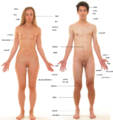User:Alexmar983/sandbox/scientific photography
<shortdescription>Photography aimed at recording scientific data or analysis</shortdescription>
Introduction[edit]
Scientific photographyrefers to the photographic capturing of information for scientific analysis or documentation, where the purpose is accurate data recording and objective information representation rather than aesthetic qualities. Photography itself is considered a technique rather than a science.
Scientific photography, with its objective approach, systematically forms the counterpart to the more subjective and aesthetic forms of artistic photography. However, the boundaries between scientific photography and other photographic genres can be blurred.
-
Alphonse Bertillon: Identification photograph of a man from profile and front, self-portrait, 1900
-
John Dillwyn Llewelyn: Smoke emerging from a ship's funnel, 1854
-
In 1901, the company Underwood & Underwood promoted the stereoscope with the marketing slogan "Stereographs as an Educator". The image shows a woman viewing stereographic photographs at home by the fireplace, with a cabinet of stereographic images to her right.
Scientific photography encompasses a wide range of photographic approaches aimed at objectively and accurately recording the subject matter, often for practical informational purposes. The photographic style emphasizes precision and effective representation of reality, typically involving minimal artistic intervention from the photographer. In some cases, the images are captured automatically without a human photographer, such as in satellite imagery, observatories, or aerial photogrammetry.
Unlike artistic photography, where the meaning is often secondary to the aesthetic impact, scientific photography prioritizes conveying accurate information over artistic expression.[1][2][3] Scientific photography finds applications in photojournalism, commercial photography, and documentary photography, where accurate visual information is essential for conveying news, promoting products or services, or documenting reality.
History[edit]
Early pioneers[edit]
In January 1839, following the announcement of the invention of the photographic process by William Henry Fox Talbot and Louis Daguerre, many individuals began experimenting with photography to explore its possibilities and limitations. This period marked a visual turn as the new medium enabled the visualization of previously unseen realms by harnessing the properties of optics and light.
Early pioneers of scientific photography include Louis Pierre Rousseau, Achille Jacques Jean Maria Deveria, Louis Auguste, and the brothers Auguste-Rosalie Bisson and Louis-Auguste Bisson.
Natural history documentation[edit]
Among the early photographic pioneers were James Deane, who photographed fossils, Edward Steichen with his flower and plant photographs, and the brothers Richard and Cherry Kearton, known for their numerous books on natural history.
Visualizing the invisible[edit]
Microphotography revealed the microcosm with unprecedented precision. In 1839, William Henry Fox Talbot produced "photogenic drawings" of crystals, plant parts, and insect wings. James Glaisher created microphotographs of snowflakes as early as 1855.
Astrophotography brought the macrocosm to those who had never looked through a telescope. In 1840, John William Draper succeeded in photographing the Moon, while Léon Foucault and Hippolyte Fizeau captured the first images of sunspots in 1845. Other pioneers in this field include John Adams Whipple, George Phillips Bond, Warren De La Rue, and Lewis Morris Rutherfurd.
High-speed photography, also known as chronophotography, froze movements that the human eye could not perceive. Spectacular series of movement studies were produced by Eadweard Muybridge (Animal Locomotion, 1887) and Étienne-Jules Marey, who constructed a photographic gun in 1883, as well as by the German photographer Ottomar Anschütz.
Using flash photography and the stroboscopic flash, Harold Edgerton was able to photographically capture bullets in flight in the 1930s. Around 1900, Arthur Clive Banfield had already managed to record the life cycle of a milk droplet in a photographic series.
Aerial photography was practically applied as early as 1858 by Nadar (Gaspard Félix Tournachon), who photographed Paris from a giant tethered balloon equipped with a darkroom for developing the photographic plates. Similar experiments were conducted in 1860 in Boston by James Wallace Black.
A further visual turn occurred with the discovery of the X-rays phenomenon in 1895, allowing X-ray images to be photographically captured from around 1896 by pioneers such as John Macintyre, A. W. Wright, and others. This marked the first time that "something other than visible light was used for visualization" (Rumpf).
In psychiatry, photography was first used as a diagnostic aid in 1852 by Hugh Welch Diamond. A similar approach was attempted around 1884 by Jean-Martin Charcot at the Hôpital Salpêtrière in Paris.
A borderline area of scientific photography is the para-physical method of Kirlian photography, developed around 1939 by Semyon Kirlian and Valentina Kirlian. The precise term for this is "high-frequency, high-voltage photography," which is scientifically reproducible and was patented in 1949.
Applications[edit]
The boundaries between scientific photography and other photographic techniques, such as computed images and medical imaging, are fluid. However, scientific photography, with its emphasis on objectivity, forms a systematic counterpart to the more subjective realm of artistic photography.
Specialized technologies employed in scientific photography include:
- Chronophotography
- Satellite photography and orbital photography
- Macrophotography
- Microphotography
- Infrared photography
- Ultraviolet photography
- False-color photography
- X-ray photography
- Nuclear track photography
- Contact radiography
- Remote sensing
- Schlieren photography
Scientific photography finds applications in various fields, such as:
- Aerial archaeology
- Astrophotography
- Geophotography
- Documentary photography
- Medical photography
- Underwater photography
- Visual anthropology
- Wildlife photography
Future Directions[edit]
Advancements in imaging technology, such as digital sensors, computational photography, and artificial intelligence, are driving innovation in scientific photography. The future of scientific imaging holds promise for enhanced resolution, sensitivity, and versatility in capturing and analyzing scientific phenomena.
Challenges[edit]
Despite its significance, scientific photography poses several challenges, including:
- Precision and accuracy in image capture
- Minimizing artifacts and distortions
- Calibration and standardization of imaging systems
- Data management and analysis
References[edit]
- ^ Odznak odbornosti: FOTOGRAF, Česká národní rada PO SSM, nakladatelství Mladá fronta, Zdenek Zaoral, 1986
- ^ Pecka, Jiří. "Fotografické sdělení III - Fotografie informativní a emotivní". fotoaparat.cz. 2003-05-26. Archived from the original on 2011-08-19.
- ^ http://www.dfkfotosvet.cz/html/txt/prednaska1.doc






